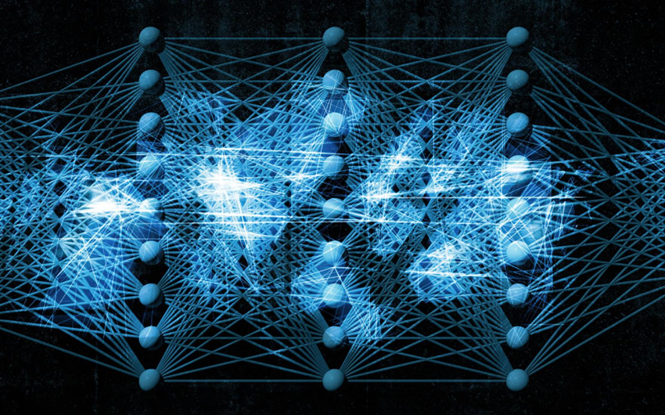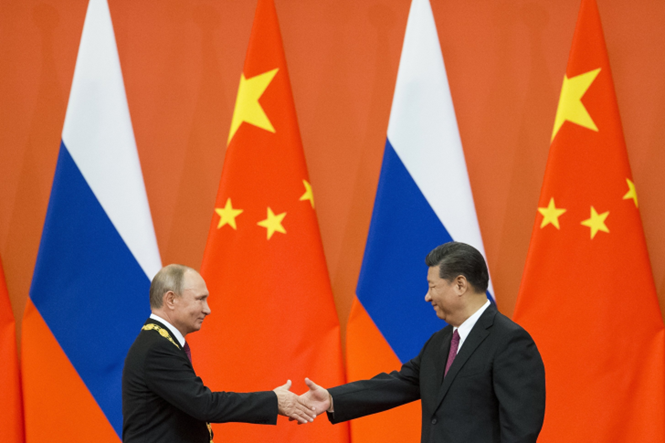HALF-FULL REPORT 05/17/24
_____________________________________________________________________________
Putin’s recent visit to Beijing is significant to Russia, China, Ukraine, and the rest of the world. China rolled out the red carpet and brought their top officials to the conference table.
The Russian delegation includes notable figures such as the new Defense Minister Belousov and key military personnel like Shoigu and business leaders and oligarchs, including Oleg Deripaska, Igor Sechin, and Herman Gref.
The Russian team is biased towards financial and economic decision-makers, suggesting a focus on strengthening economic and financial cooperation with China. The sanctions appear to be hurting enough to bring this group to the table.
Russia is reportedly spending 9% of its GDP on its military, which is the highest expenditure rate in the world. At the peak of WWII, Russia spent 13% of its GDP on its war machine. Russia has likely reached its capacity to produce conventional munitions and has been reaching out to Iran and North Korea for modern, intelligent weapons.
The gravity of the war is being realized everywhere, as the West cannot produce munitions fast enough to meet the rate of fire. Recently constructed artillery shell plants in Europe have experienced mysterious fires and explosions. They are not running at their projected rate.
American munitions stocks are seriously depleted. Recent finger-pointing in Congress suggests that the Republicans are somehow blocking artillery shell deliveries. Allegedly, the Republicans are restricting supplies to Europe while the Dems throttle supplies to Israel.
However, as with all things from Washington, these are just the latest narratives papering over the seriousness of the industrial capacity shortfall. Washington is afraid to say that we are nearly out of ammunition, and not just artillery shells.
At full production, a decade is required to replace the depleted stocks of Javelin anti-tank missiles.
This delegation to China is intended to show Russia’s seriousness in addressing the economic and financial issues caused by the ongoing war. Indicators suggest that Russia is poised to establish significant drone-tech-related partnerships.
It is now common to hear reports of 100-drone assaults on troops and fortifications from both sides in Ukraine. Smaller drones can drop a grenade into a disabled tank, while larger drones can destroy a tank. Field units have recently devised “turtle tanks” as an improvised drone countermeasure.
Russian soldiers are trying to protect their tanks in the same way that Americans tried to protect vehicles in Afghanistan and Iraq.
Turtles are conventional tanks outfitted with as many drone signal jammers as possible, installed under a metal “shed.” The concept appears viable during assaults, but not so much during general infantry support. About 80 of these vehicles have been observed in the field. They are vulnerable to heavy artillery, while protected from small drones.
The bottom line is that Russia is a good enough producer of basic munitions, but the last two years have shown that intelligent weapons are the future, and Russia is struggling to produce them, and defend against them.
Putin’s recent replacement of Shoigu with Belousov as defense minister suggests that Russia is considering transitioning to a total war economy. The meeting with China and its industrialists signals a focus on drone technology partnerships and collaborations at scale.
Belousov is known for his economic expertise and academic understanding of the balance between military and civilian production. Putin claimed in a recent speech that his appointment signals a shift in the Ministry of Defense’s focus toward production, design, research, and innovation. This change should have a considerable impact on military-industrial companies, and like the turtle tank, innovations are expected.
However, innovation is neither a Russian nor Chinese strength. Reverse engineering Western technology and producing at scale is very much in China’s wheelhouse, and so it is likely that Western technology will be copied quickly and thrown back into the fight.
*******
Artificial Intelligence
 The rise of autonomous weapons is projected to expand significantly over the next ten years. The United States cannot produce these weapons at scale and lacks the subcomponent industry to withstand a reverse embargo from the world.
The rise of autonomous weapons is projected to expand significantly over the next ten years. The United States cannot produce these weapons at scale and lacks the subcomponent industry to withstand a reverse embargo from the world.
Biden recently announced a comprehensive and very significant increase in duties on Chinese goods. Perhaps Biden is attempting to remove one of Trump’s major talking points ahead of the election. Perhaps he is trying to spur production in more closely aligned countries such as Mexico.
Regardless of the reason, re-shoring manufacturing in various industries is now critical to the American economy. The lack of skilled and even trainable labor means that autonomous industrial systems must be developed to address the anticipated labor shortages.
The primary factors that led to the movement of industry from North America continue to present considerable challenges for established industrial enterprises, and capital is both becoming expensive and scarce.
Replacing yesterday’s distributed control systems with modern intelligent technologies employing predictive control modeling is achievable and necessary. The problem to be solved involves the autonomous prevention of process drift, as occurs in complex systems run with a minimal or no workforce. Whether the industrial plant is an oil refinery or a chip foundry, the concept is the same. It also applies to warships and armored vehicles.
Modern control systems require human input to reestablish a processing center within its operational constraints and boundaries. A Generalized, Pre-trained, and Transformative (GPT) control model, utilizing multivariable calculus and machine training of a Bayesian inference engine can keep a complex manufacturing system in control without human oversight.
While the technology is not new, it is the core of the Fourth Industrial Revolution. Recent advances in the GPT model, starting in 2020, changed the internal workings from linear algebra to multivariable, stochastic calculus, and automated the ability to develop relationships between input and output.
The video below explains the core concepts of AI learning systems. The technology is remarkable, but it has juiced the spirits of tyrants everywhere. It is good to understand what it is and how it works. Throwing false data into the matrix is conceptually the same as throwing a wrench into the gears of yesterday’s machine works. Only this time the effects can be nationwide or global. Russia and China, are you boys ready for one billion data pranksters?
In the defense industry, this is exemplified by various iterations of autonomous air and sea drones. Tesla continues to improve its autonomous vehicle project, as does the Department of Transportation.
The project entails several crucial components, such as a knowledge capture process that gathers data from conventional sensors, databases, human input, maintenance records, and engineering specifications. Knowledge capture has become an advanced practice and might determine the winners and losers in the future economy.
This idea of sophisticated industrial plants and transportation networks entails the systematic use of deontological, or rule-based, ethics. However, this approach can lead to system-wide management confusion due to conflicting rules and obligations at various levels within a system.
Rule-based organizational structures are often inflexible and struggle to adapt to the various situations and challenges encountered in everyday operations.
They may overlook long-term ramifications, such as asset dependability and legal adherence, even when the consequences are significant. Additionally, these systems can impede a facility’s capacity to maintain operations during periods of instability or equipment malfunction.
A major issue emerges from the impact of strictly rule-based predictive models on human factors. The German approach to system automation during the 1930s and 1940s, as well as the Soviet method through the dissolution of the state, both utilized early forms of predictive modeling and rule-based ethics. This led to individuals being freed from personal responsibility, resulting in severe technical and ethical shortcomings.
The ascent of Western civilization and numerous Chinese dynasties can be credited to their extensive adoption of virtue ethics, which considers the qualities of the actor in addition to the act.
The historical narrative is filled with instances where character holds great significance, and the character, or spirit, of autonomous industrial systems, merits contemplation.
As autonomous systems mainly depend on complex rules-based orders inherent to the models, the door is open to catastrophic system failure caused when the operator or administrator only follows orders, and the production system also only follows orders.
This double stacking of a procedure-following culture with a procedure-following system might be very efficient in theory. But in practice, this construct replaces personal responsibility with “I am only following orders.”
This is a very big deal in light of a new economic Cold War between East and West.
China will replicate the West’s designs, software, weaponry, and other elements with unrelenting efficiency, and they already hold an advantage in the Fourth Industrial Revolution. Nevertheless, the CCP cannot reproduce Western Virtue Ethics and maintain its current form.
Furthermore, the CCP cannot permit the virtue ethics of Confucianism and Buddhism to emerge as rivals to the CCP’s command and control model.
Examples of failures that occurred under rule-based ethics, due to the lack of virtuous human involvement, include the Chornobyl disaster, the Deepwater Horizon event, and numerous transportation accidents, involving bridges and ships.
These incidents underscore the importance of nurturing the human element, as relying solely on rule-based systems may lead to more similar occurrences. Multiplied over an economic base as large as the combined BRICS, the potential for the destruction of capital and massive environmental damage is sobering.
Both the East and West face a skills shortage. The recent move of much of Africa from the Western sphere of influence to the BRICS economies in the East indicates that the East is becoming more bottom-heavy. Eastern economies will certainly adopt and implement modern, autonomous industrial systems more rapidly and extensively than the West.
However, the inherent nature of the East suggests that they will stack rule-taking populations on top of rule-taking production systems, similar to the Third Reich’s nationalist rule-based order or the USSR’s international rule-based order.
Instead of relying on organizations like the Gestapo or networks of Zampolit to enforce compliance, modern AI-driven social credit systems will fulfill this role with increased efficiency. Structural, and systemic errors will grow with time.
If we discuss armies instead of economies, the BRICS seem to be inclined towards creating a non-virtuous system where second lieutenants manage the production and distribution, while lacking sergeants to override inexperience and general foolishness. It is the Soviet concept all over again, only faster because of computerization.
The distinctions between the compliance philosophies of Putin and Xi and the concept of freedom in the West will become more evident as the Ukraine War hastens the Fourth Industrial Revolution. While free-market economics and the prevalent culture of individualism in the West may lead to short-term inefficiencies compared to command-and-control economies, long-term errors are avoided due to the countless data points generated through local innovation.
China can avoid industrial-scale economic failure by restoring full rights and freedom to its major religions because they emphasize the primacy of the individual actor, not the act. But they will not because this would destroy the CCP.
The conflict in Ukraine is pushing Russia and China to establish an economic partnership that will facilitate Russia’s intensification of its war efforts. This alliance will significantly boost the availability of both conventional and advanced weaponry to Russia, prolonging the war.
The rapid development of AI-based weaponry and production systems will automate compliance within both economies. These compliant systems, overseen by compliant individuals and ultimately governed by leaders absolved of personal responsibility due to the nature of the new automated systems, will evolve into extensive Milgram experiments lacking effective means to correct mistakes.
In truth, computational errors, such as viruses infiltrating the internal functions of AI systems, will intensify over time. It took the USSR 70 years to disintegrate. With automation, the subsequent large-scale Russia-China failure will occur much more swiftly.
The West must take steps to prevent a similar failure from occurring here, as both East and West deploy similar intelligent systems.
 The Covid-19 vaccination program varied across different cultures. In America, approximately 50% of the population ignored the vax guidelines, despite facing the most extensive propaganda campaign in human history, supported by all levels of conformists and aggressors.
The Covid-19 vaccination program varied across different cultures. In America, approximately 50% of the population ignored the vax guidelines, despite facing the most extensive propaganda campaign in human history, supported by all levels of conformists and aggressors.
Future generations may view America’s widespread non-compliance with organized ignorance as a moment of national pride. This non-compliance indicates that at least half of Americans possess virtues such as honesty, integrity, and compassion, reflecting their individuality.
The compliant focused on obeying the rules, assuming them to be ethically right. However, the rules turned out to be defective, and as a result, people are experiencing the negative consequences of vaccinations globally.
The upcoming meeting between Russian and Chinese high-ranking military and economic officials will yield an outcome similar to the COVID-19 vaccination program, due to the automatic speed and nature of the AI systems underlying their new economic alliance.
Automation makes errors faster and deeper, and their command economies lack the freedom to innovate at the micro level. Therefore, the data used to constantly train their new AI systems will reinforce errors, not cancel out errors.
China and Russia will not bounce back from the strategies they are devising in Beijing this week.


